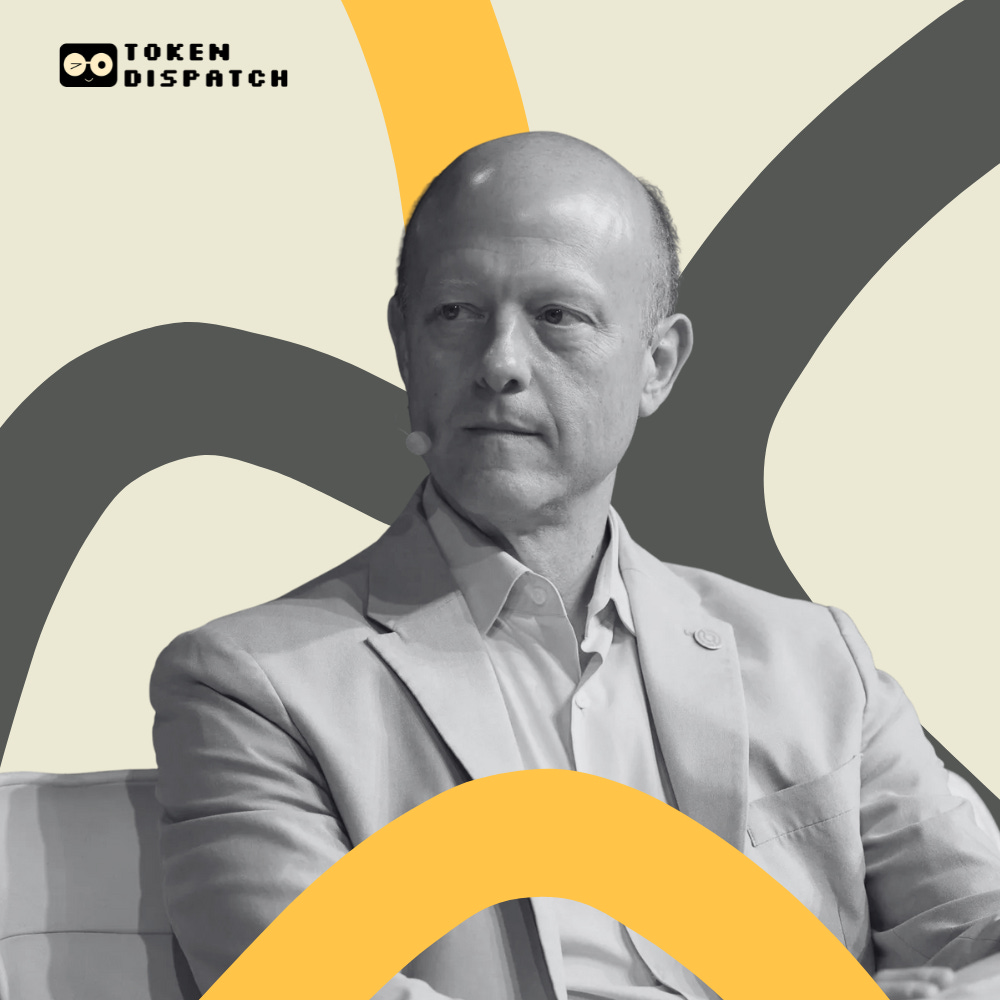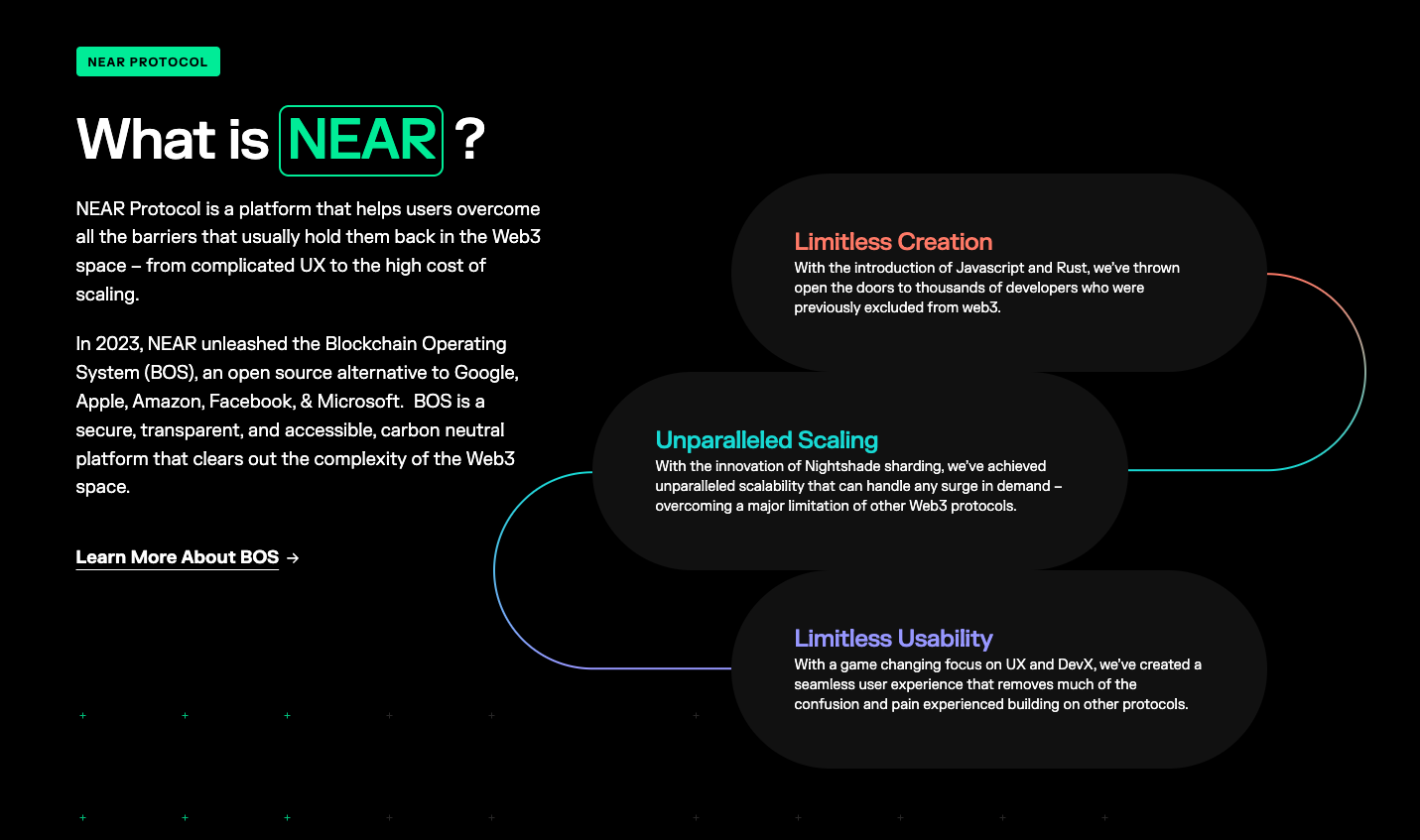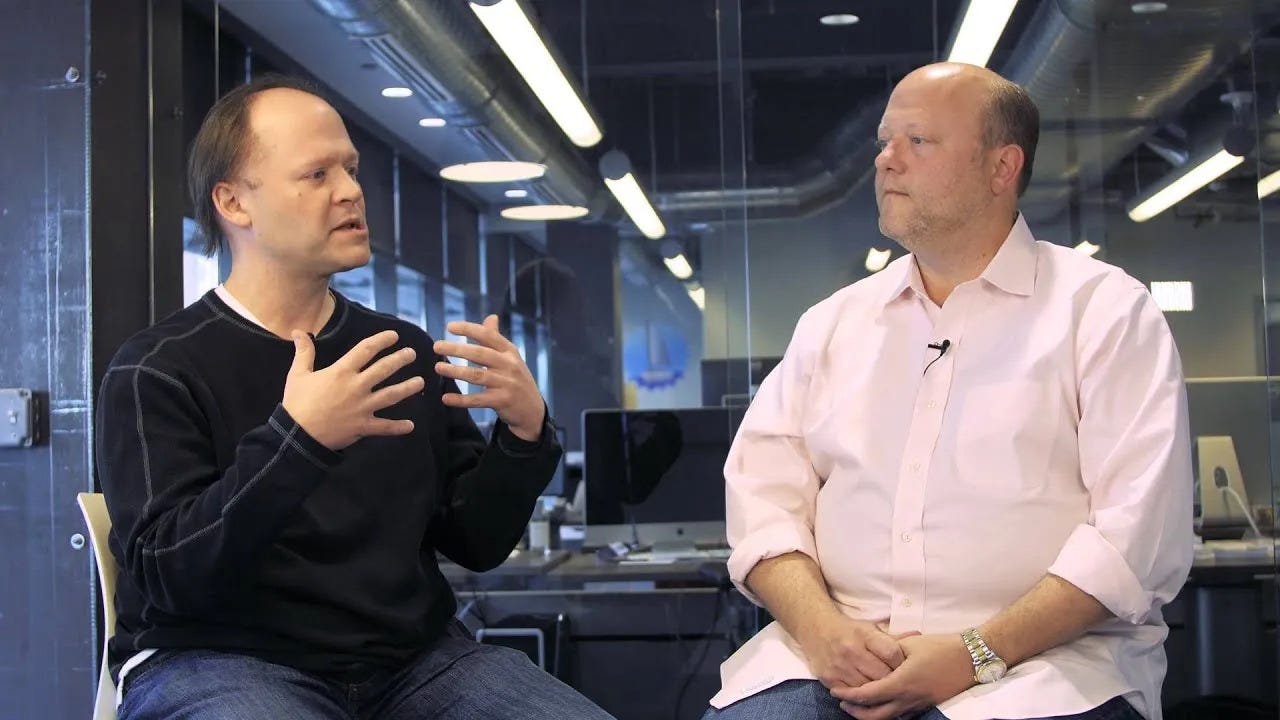Jeremy Allaire: The Prophet of Protocols 🔄
The man who built his empire around programmable money.
"We're in the very early stages of building out a radical technology that has the potential to change the world in as significant a manner as the web."
Jeremy Allaire has been right about the future three times. First was, in 1990, when he saw the transformative potential of the World Wide Web at a time when most people had never even heard the term "internet." That insight led to the creation of ColdFusion and earned him millions.
Second was in 2002, when he predicted that anyone would be able to distribute video content globally without television networks; a vision that created Brightcove and made him hundreds of millions.
The third time was in 2013, when he recognised that cryptocurrency could become the foundation for an entirely new financial system. And that bet might change how money works forever.
At 54, Allaire has spent three decades building the invisible infrastructure that powers the digital world. His creation, the USDC stablecoin, processes trillions of dollars in transactions annually and has become the bridge between traditional finance and the crypto economy.
But for someone who has made a career out of seeing things that others couldn't even perceive, Allaire isn't done building the future.
Future of Web3 Won’t Look Like Web3
Seed phrases. Chain switching. Wallet confusion. These aren’t features—they’re roadblocks.
NEAR Foundation is building the infrastructure to fix that.
They’re backing the tools and protocols that make Web3 usable for everyone—not just devs and crypto-natives.
Here’s what that looks like:
Login with email, self-custody included
One account across chains and apps
Gasless transactions and smooth onboarding
Abstracted chains, no more switching networks
If you're tired of UX getting in the way of adoption, NEAR is already building the fix.
👉Explore what NEAR Foundation is backing
The Web Awakening Decade
1990. A dorm room at Macalester College, Minnesota.
Jeremy Allaire's roommate had just done something almost unthinkable. Working for the college's computer services department, he'd managed to secure an internet connection for their room. At a time when most people thought "web" meant something spiders made, Allaire was about to stare into the future.
The first time he logged on, everything changed.
He saw it and said, “This is going to change the world”, though not with casual college enthusiasm. By graduation in 1993, the web had become his "central passion."
Think about the timing. Allaire was experiencing the internet before Netscape existed. Before Yahoo was conceived. Before most people had heard the word "cyberspace." He was getting a preview of civilisation's next chapter.
But the foundation for this moment had been built years earlier.
1984. The Allaire family living room, Winona, Minnesota.
Thirteen-year-old Jeremy walked up to his parents with a small proposal: Loan me $5,000 to start a baseball card trading business. His father, Jim, was a psychologist. His mother, Barb, was a press editor. They understood people and information. But their teenager was asking for serious money to trade pieces of cardboard.
Other kids collected cards for fun, but Jeremy looked at them differently. Market inefficiencies. Pricing trends. Opportunities to buy low and sell high.
He doubled their money.
1993. Fresh out of college with the web burning in his mind.
Jeremy had a problem; almost no one understood what he was talking about. The internet? Most businesses had never heard of it. So he did what any rational person would do. He started his own company.
Global internet Horizons was born, offering consulting for media publishers trying to figure out this mysterious "web" thing. But consulting wasn't going to change the world.
1995. Jeremy had a conversation with his brother J.J. that would either make them rich or leave them flat broke.
They founded Allaire Corporation with $18,000 of J.J.'s savings. Pretty much everything they had.
The dynamic was perfect. J.J. handled the programming wizardry. Jeremy focused on what the market actually needed. This was 1995. Before Netscape ruled browsers. Before businesses understood that the web meant money.
ColdFusion launched and changed everything practically overnight. The software turned static web pages into interactive applications that could talk to databases, handle user accounts, and process transactions.
Suddenly, companies like MySpace, Target, Toys "R" Us, Lockheed Martin, Boeing, and Intel could create dynamic websites without hiring armies of programmers. The software became the foundation for e-commerce, the backbone of content management, and the engine powering the dot-com boom.
Starting with twelve people in Minnesota, they achieved immediate profitability.
Recognising that the web was accelerating faster than anyone anticipated, they hooked up with Polaris Ventures in Boston and raised their first real money: $2.5 million.
When they tried to move to Silicon Valley, a landlord turned them down for being "too small." So they went to Boston instead. That rejection probably saved them. Boston's tech scene provided resources and talent, without Silicon Valley's ego-driven culture.
Annual revenues exploded from just over $1 million in 1996 to about $120 million by 2000. The company grew to over 700 employees with offices spreading across North America, Europe, Asia, and Australia. In January 1999, they went public on NASDAQ as one of the early web software success stories that proved the internet wasn't just hype.
March 2001. The phone call that would test everything.
Macromedia wanted to buy Allaire Corporation. For $360 million, no less.
Jeremy was 29 years old and about to become very rich.
He said yes. Jeremy and J.J. sold Allaire Corporation to Macromedia, with Jeremy becoming CTO of the multimedia giant while J.J. stepped away from the tech world to pursue other interests.
The Video Revolution
In 2002, Jeremy Allaire walked into the Macromedia conference room with an idea that could make his bosses squirm.
As CTO of the multimedia software giant, he understood the implications of the numbers in front of him. Flash — Macromedia's technology that powered interactive animations, videos, and games on websites — was installed on 98% of computers worldwide. Broadband was spreading. The pieces were aligned for something that didn't exist yet.
He pitched Project Vista, a browser-based system for capturing, uploading, and publishing video on any website. Anyone could become a broadcaster. Anyone could reach a global audience.
Imagine YouTube, but this was years before Google had even heard of a video platform.
Macromedia's executives listened politely. Then they killed the project.
Jeremy had just watched his company pass up on the future of media. The same company that gave the world Flash, the technology powering early internet multimedia, had just said no to owning online video, and along with it, a piece of the web.
Jeremy Allaire quit Macromedia in February 2003.
His colleagues thought he'd lost his mind. CTO of a major tech company. Comfortable salary. Important products to manage. Why walk away from everything?
Because he'd seen the future, and Macromedia wasn't interested in building it.
Jeremy joined General Catalyst as Entrepreneur-in-Residence. For a year, he studied the market, watched the pieces move into position, and prepared for war against the entire television industry. He was just waiting for the perfect moment.
In 2004, he co-founded Brightcove with the vision of creating "an environment for independent video producers to deliver their content directly to consumers, bypassing traditional TV networks and channels.”
Jeremy's strategy had evolved since his first company. Instead of bootstrapping with borrowed money, he decided to "get VC funding immediately and grow big fast." Taking on television required serious capital and partnerships with major content producers.
The company's mission reflected Jeremy's evolving philosophy about the democratising power of internet technologies. The growth proved Jeremy right about everything. Content creators who couldn't afford TV networks suddenly had global distribution. Independent filmmakers could reach audiences without begging media moguls for permission.
Brightcove went public in 2012. $290 million in valuation. Jeremy owned 7.1%.
He'd successfully built the marketplace that enabled thousands of creators to reach global audiences without begging television networks, movie studios, or media executives for permission. But while Brightcove conquered online video, he stepped down as CEO to become chairman in 2013.
Why leave when everything's working? And for the second time? But Jeremy was already looking around the next corner.
The Money Revolution
Once again, in 2013, Jeremy Allaire was staring at his computer screen, just like he had in that Minnesota dorm room twenty-three years ago.
This time around, he was reading up on something called Bitcoin.
The 2008 financial crisis had left him questioning everything about traditional banking. Lehman Brothers had collapsed. Bear Stearns had vanished. The global financial system had nearly imploded, and Jeremy was wondering if there was a better way.
When he first came across Bitcoin, the feeling was familiar, almost like déjà vu. "I've had the exact same experience with digital currency, especially with Bitcoin," he told Fortune. "We're in the very early stages of building out a radical technology that has the potential to change the world in as significant a manner as the web."
He saw what he called "a universal system of plumbing for money, just as the HTTP protocol served as the foundation for information to spread through the internet."
October 2013. Jeremy co-founded Circle with Sean Neville.
The vision was to help create the world's first global currency built on the internet and built on open platforms and standards such as Bitcoin.
Accel Partners and other prominent VCs backed them immediately. Everyone could sense this wasn't an incremental improvement to existing financial services.
Jeremy wanted to create programmable money that could settle payments almost instantly and at a fraction of traditional wire transfer costs. They were not about improving existing financial services, but creating entirely new categories that could operate globally without the correspondent banking relationships that made international transfers slow and expensive.
But Circle's early experiments with consumer Bitcoin apps and trading desks weren't quite hitting the mark. The breakthrough came when Jeremy realised the problem wasn't the technology, but volatility.
2018. The creation of USDC
Working with Coinbase through the Centre Consortium, Circle launched USD Coin. A stablecoin backed by actual US dollar reserves. Each USDC token was worth exactly one dollar.
Suddenly, businesses could enjoy the benefits of cryptocurrency with instant global transfers, 24/7 availability, programmable smart contracts — all this, without exposing themselves to Bitcoin's wild price swings.
The regulatory approach Jeremy chose was risky. Instead of operating in grey areas like many crypto companies, Circle worked directly with financial regulators to ensure USDC met the highest standards for transparency and compliance.
This decision sometimes put Circle at a competitive disadvantage. Other stablecoin issuers moved faster because they cared less about compliance. But Jeremy was playing a longer game.
By 2025, USDC had become the second-largest stablecoin by market cap, with over $64 billion in circulation. Businesses used it for international payments. Developers built financial applications on top of it. Individuals send remittances across borders instantly.
Jeremy's success came despite facing what industry observers called a nearly impossible distribution challenge. Unlike Tether, which had gained adoption through early partnerships with crypto exchanges in Asia, Circle had to build distribution networks from scratch.
Circle’s response was a strategic partnership with Coinbase, where Circle pays 50% of its net interest income in exchange for distribution throughout the Coinbase network.
Expensive? Yes. Effective? You bet!.
USDC became the primary alternative to Tether in Western markets.
The Crisis Test
March 10, 2023, Dubai. What was supposed to be Jeremy's son's thirteenth birthday weekend.
The phone started buzzing at 2 AM local time.
Silicon Valley Bank was collapsing. And Circle had $3.3 billion of USDC's reserves sitting in that bank.
Within hours, USDC lost its peg to the dollar, falling as low as $0.87. Traders were panicking. The stablecoin that Jeremy had spent five years building looked like it might become practically worthless overnight.
Jeremy assembled a virtual war room on Google Meet, working eight hours ahead of his East Coast team. His son's birthday party was forgotten. This was about protecting millions of people who trusted Circle with their money.
Plan A: Transfer funds to other banks immediately.
Plan B: Rely on FDIC deposit insurance to cover any losses.
Plan C: Negotiate deals with companies willing to buy Circle's SVB holdings at a discount.
While the crypto world watched, Jeremy made a personal guarantee: Circle would "cover any shortfall" if SVB deposits weren't recovered.
The crisis tested everything Jeremy had built his reputation on. Transparency. Accountability. Doing the right thing when it was difficult.
Circle published detailed blog posts explaining exactly what had happened and what steps they were taking to protect customers.
Three days later, federal regulators guaranteed SVB's deposits.
USDC returned to its dollar peg. The crisis was over.
Jeremy had just demonstrated that Circle could survive severe external shocks while maintaining customer trust. The approach he'd chosen—working with regulators instead of against them — had paid off when it mattered the most.
Throughout Circle's development, Jeremy positioned himself as cryptocurrency's most prominent advocate for clear regulatory frameworks. Many crypto entrepreneurs disagreed, preferring minimal oversight. Jeremy testified before Congress, participated in regulatory working groups, and engaged with policymakers worldwide to shape cryptocurrency regulation frameworks.
Circle became the first major global stablecoin issuer to comply with the European Union's Markets in Crypto Assets regulation in 2024.
Read: Circle Wins EU 🏆
The strategy was working.
And then Jeremy decided to take Circle public.
The journey to public markets wasn't smooth. An initial SPAC merger attempt in 2021 didn't receive SEC approval. But Jeremy persisted.
July 2025. Circle went public on the New York Stock Exchange.
The IPO filing revealed a company with substantial revenue, clear regulatory compliance, and a business model operating at massive scale. Circle's public debut valued the company at over $4.6 billion. Jeremy's decade-long bet on stablecoins had paid off spectacularly.
Today, Circle trades as CRCL with a market cap exceeding $40 billion. The stock has gained over 430% since its July IPO, making Jeremy's vision one of the most successful public market debuts in crypto history.
Read: Circle's Wild Ride 🎢
Jeremy believes stablecoins are approaching their "iPhone moment"; the point where technology becomes so useful and accessible that it achieves mass adoption.
The Genius Moment
On July 18, 2025, President Donald Trump signed a piece of legislation that would vindicate everything Jeremy Allaire had built over the past decade. The GENIUS Act became America's first comprehensive stablecoin regulation. Jeremy's strategy of embracing regulatory compliance had positioned USDC perfectly.
The GENIUS Act did three things Jeremy had been advocating for years. First, it confirmed stablecoins weren't securities, clearing away regulatory uncertainty that had plagued the industry. Second, it required full backing by safe assets like Treasury bills, addressing concerns about reserve transparency. Third, it brought stablecoin issuers under the same compliance framework as traditional banks.
Jeremy had spent years building the infrastructure. Now governments were scrambling to adapt to a world where programmable money was inevitable.
The prophet who saw the web's potential in 1990, video's democratisation in 2002, and cryptocurrency's revolution in 2013, had just watched his third prediction redefine money itself.
In an industry obsessed with moving fast and breaking things, he's proven that the most transformative change often comes from patience, persistence, and the wisdom to see what others overlook.
Three predictions. Three industries left with a meaningful impact. And if his track record holds, the most important changes are still ahead.
That’s it about the Circle creator, see ya next week with another intriguing profile.
Until then …stay absolutely curious,
Thejaswini
Token Dispatch is a daily crypto newsletter handpicked and crafted with love by human bots. If you want to reach out to 200,000+ subscriber community of the Token Dispatch, you can explore the partnership opportunities with us 🙌
📩 Fill out this form to submit your details and book a meeting with us directly.
Disclaimer: This newsletter contains analysis and opinions of the author. Content is for informational purposes only, not financial advice. Trading crypto involves substantial risk - your capital is at risk. Do your own research.








